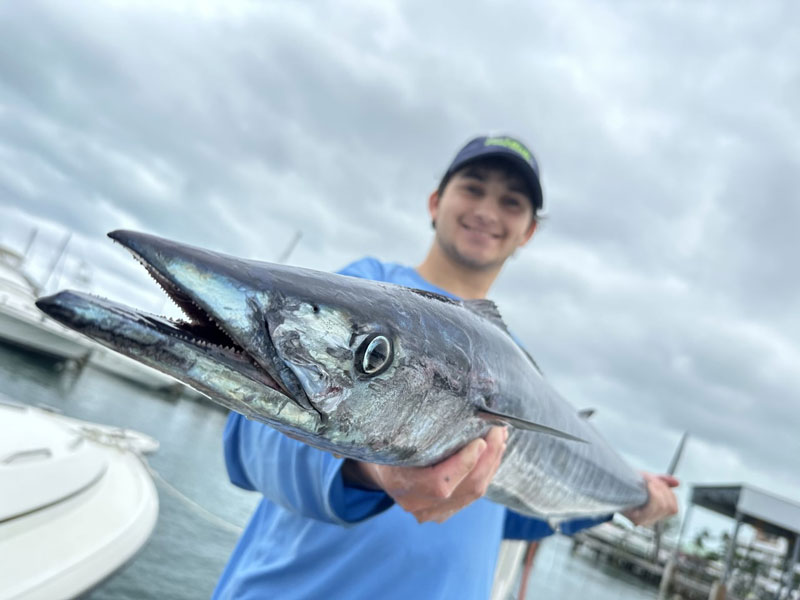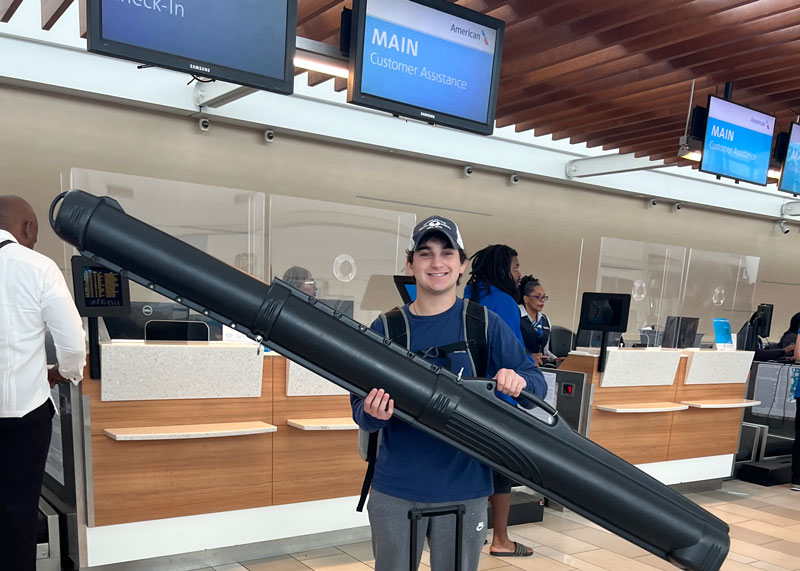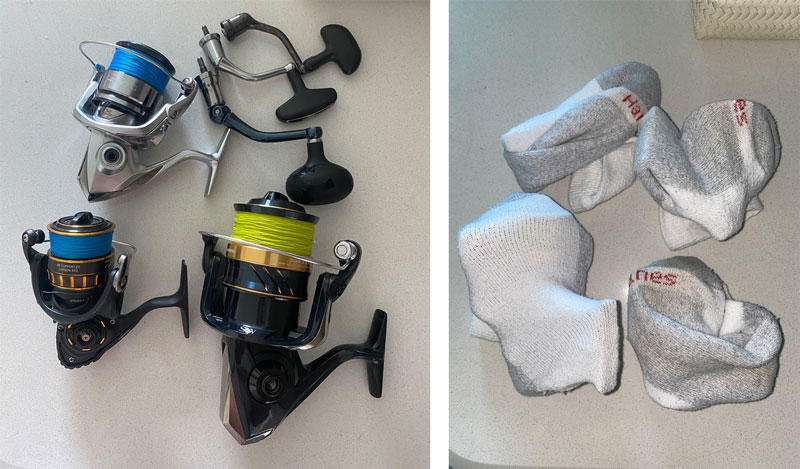Hauling your prized arsenal to a far-off fishing destination can be a confusing and stressful process, but with proper planning and precautions, you can spend the duration of the turbulence on the flight with the peace of mind that your fishing gear will arrive intact. The first step in planning out how to haul your precious cargo is assessing how gear-friendly your airline is, because some are better than others. A simple search on your airline's website will reveal their special baggage and sports equipment policy. Both Southwest and American airlines allow for a rod case and tackle bag to count as one checked bag, together. But some airlines will charge extra for oversized luggage.

Tip: Never try to take hooks or lures in carry-on baggage. Sometimes you sail through security without a problem but other times you do not, and it is not worth the risk of getting them confiscated.
Fishing Rods on Airplanes
Starting with rods, a hard plastic case is a must. Investing in a good case that will securely fit your sticks is an important step in ensuring you don’t arrive at your destination with your one-piece rod as a two-piece rod. The durability of the Plano Airliner Telescoping rod case is unmatched, and the one-time investment will protect your rods for years. I am not the best at traveling light when it comes to my fishing gear. I like to be prepared for anything, especially when going to places where fishing tackle will not be accessible. And the Plano Airliner allows you to bring plenty of rods. It is 4.5 inches in diameter, extends up to 88 inches to hold seven-foot rods with ease, and retracts down to 47 inches for convenient storage. Top-loading and lockable, each case will hold up to eight rods.
I have been using this case for six years and have brought it to five countries and on countless fishing expeditions, and have yet to have a rod break while traveling with it. Simply rubber-band your rods together, ideally in a tight bundle, to prevent them from moving around individually inside the tube during travel. Next, protect the guides and tip by either wrapping the guides with cloths or bubble wrap, and putting a sock or bubble wrap on the tip. Finally, place your rods in the case and telescope it down as short as possible without putting pressure on the rod tips, then use the clips to lock it in place.

Flying with Fishing Reels
Next, let's talk reels. To protect reels and save as much room as possible, the best way to store reels is to put them in either a neoprene reel cover, bubble wrap them, or slide them into socks. For spinning reels and low-profile baitcasters socks or bubble wrap work great, but for larger conventional reels a case is recommended. For the spinning reels go ahead and unscrew the handle for easier stowage, put all the handles in a sock, and each reel body in a sock. It is safest to bring your reels in carry-on baggage to minimize the chances of them getting damaged. For larger conventional reels in cases, secure them in your checked luggage.
Editor’s note: One issue we’ve encountered in the past is bent spinning reel bails. If the reel is packed such that the bail is subjected to pressure it can bend, then it won’t close properly or may hit your hand or the rod while revolving. Either use a rigid case that will prevent the spinning reels from being under direct pressure, or stow carry-ons with reels under the seat in front of you where you know the bag or case won’t be smashed or crushed by other luggage.

Flying with Fishing Tackle
If you check all your tackle you won't run into any issues. You can bring fillet and bait knives, hooks, or whatever, as long as it is checked. The best way to transport all of your tackle is in a well-padded tackle bag or backpack, but a backpack is much easier to haul around. Look for a bag that can fit a few tackle trays with extra room for leader, pliers, and other accessories you’ll want to bring. My favorite is the Plano Atlas Backpack, which is a bit pricey, but the molded EVA is very sturdy, the straps are very comfortable, and it fits a ton of gear. If you would like to travel on the lighter side just put a few tackle trays in your suitcase and bring a drawstring or small backpack.
Traveling with fishing gear can be quite a pain. But if you do your research and follow these steps to secure your gear you can travel with confidence that your gear is well protected, and you won’t feel the pain of a snapped fishing rod or a bruised and bent reel.
-By Ian Rubin